Nothing
beats heading out to the beach very early in the morning to go surf fishing.
The smell of the fresh salty air, cool breeze, and near empty beach to
yourself is always bliss! Every beach has its own kinda flavor. Some beaches
have huge surf slamming the shore most of the time, some don’t. There are
beaches that get pretty deep very near the shoreline, there are some that are
shallow all the way to the surf break. Some have very fine sandy bottoms, some
are course, and some have flat hard bottoms. Identifying specific characters of
beaches is key not only in catching fish, but also for your own
safety. Before you commit yourself to wading-in and surf fishing a beach, I recommend you survey the area during low tide. Pay attention to deep holes where water is pooling. These areas will be deep during high tide and most likely will hold bigger models of fish as they wait in ambush for bait fish. Look for sandbars and shallow areas where it will be safe to wade during high tide, and the route you can safely walk out through to reach deeper waters during low tide. Take caution if you walk out far during low tide to always check the water level behind you all the way back to the beach. The areas near the shore are most often lower than those further out. The areas near the beach gets carved out by the surf and the changing tides. So if you’re out there on a sandbar during low tide in ankle deep water, the route you took from the beach, may already be in knee deep water as the tide begins to change. The turning of the tides from low to high and vice versa is very subtle. So be very careful. You don’t want to be caught out there and have to swim back.
safety. Before you commit yourself to wading-in and surf fishing a beach, I recommend you survey the area during low tide. Pay attention to deep holes where water is pooling. These areas will be deep during high tide and most likely will hold bigger models of fish as they wait in ambush for bait fish. Look for sandbars and shallow areas where it will be safe to wade during high tide, and the route you can safely walk out through to reach deeper waters during low tide. Take caution if you walk out far during low tide to always check the water level behind you all the way back to the beach. The areas near the shore are most often lower than those further out. The areas near the beach gets carved out by the surf and the changing tides. So if you’re out there on a sandbar during low tide in ankle deep water, the route you took from the beach, may already be in knee deep water as the tide begins to change. The turning of the tides from low to high and vice versa is very subtle. So be very careful. You don’t want to be caught out there and have to swim back.
The Kastmaster (KM) is my #1 choice for light surf fishing. Smooth,
polished, and aerodynamic, it’s the best dang lure ever devised by man. It’s
the attack jet of lures. Versatile; you can jig it, fish it topwater, do the
walk the doggy, troll with it, fish it slow or be explosive via slash and hack;
it’s the universal lure that produces time and time again. It’s my go-to-lure
if everything else fails. During windy days, like a bullet, it’ll outcast all
the lures in your tackle bag. It has the reach and accuracy to get to that
distant boil in the water or to get over that surf break. Even the mighty Kroc
can’t out-distance the Kastmaster. The Kroc will be fluttering in the wind and
start its downward trajectory long before the speedy KM loses steam. The KM
will also sink faster than any of the count down lures in the market and will
get to the deeper strike zone faster.
Rod: The longer the rod, the farther you can cast. For surf fishing, I prefer 8 to 9
foot medium/light action rods rated for 8 to 12 lbs test line. The longer rods
will also enable you to raise your line above the incoming surf. I recommend
spinning rods made for salmon and steelhead if you can get a hold of some. Rods
like the Berkley Air IM7 salmon/steelhead spinning rod has awesome sensitivity.
I’ve also used 7 foot Shakespeare Ugly Stik Intercoastal rods, they’re
indestructible and cheaper, although they don’t cast as long as the Berkleys.
Reel:
I’m a spinning freak. For surf fishing, I recommend the use of light spinning
reels rated for 6 to 12 pounds. Surf fishing involves casting in rapid succession
and covering large areas when using lures. I’ve walked many miles along the
beach surf fishing. I’ve never really counted how many casts I make in an hour. I'm not really fond of baitcasting reels; I'm afraid I'll spend more time untangling bird's nests than fishing.
So, you’re out there on the beach
armed with your favorite rod, reel, and the magical KM. Now all you need is a fish on your line to make your
day. Hopefully you’ve done your homework, and know where they might be
holding in deeper holes along the surf. But, first things first. Always be
methodical. Scan the surfline where you’re at. Do you see any boils or any
commotion on the water as baitfish scatter to flee from their bigger neighbors?
Are there any birds diving and congregating in a specific area? If you see any
of these, it should be your very first targets to aim and fire your KM. Most of
the time you’ll get instant hook-ups.
If you see none of these easy giveaways, then always stick to the plan; be methodical. I usually start from one end of the beach all the way to the other end, and back. Surf fishing is also my form of exercise. For starters, I draw an imaginary half circle from where I’m standing out to the water. I then make imaginary slices (like slicing a pepperoni pizza, hmmm now you’re making me hungry) from right to left or left to right, whichever you prefer. You can make it as thick or as skinny of a slice as you like. The thinner the slices the more cast you’ll make. This is also what you call fan casting. Once you’ve covered your first half of a pie, you move on a few yards and do it again. Make sure your pie overlaps a bit, to cover as much area of the water as you can. If you reach one of your favorite deeper holes, you can concentrate on it and make more casts in that area.
The
type of retrieve you do with the KM depends on your target species of fish.
After surf fishing the beaches here in SoCal often, I’ve observed certain fish will more often strike at a specific type of retrieve using the KM. The
beautiful Yellowfin Croaker will often strike a KM when hopped
across the bottom of the surf. The feisty Bonito will often strike
either right as the KM is dropping after a cast or when retrieved a little bit
faster. The California Halibut (aka the “Butt”), requires a little bit more
finesse; its eyes are on top as it lays in ambush covered by sand. The KM must
be retrieved like a swimming baitfish as close to the bottom as possible above
the watchful eyes of the Butt. More often, I start with straight in slow retrieve.
Whatever type of retrieve you use, the most important thing is you’re
constantly feeling the swimming action of your KM or whatever type of lure
you’re using. This is key! If the wind is a little bit strong resulting in
stronger surf and you can’t feel the KM at the end of your line, then you might
need to change to heavier and bigger size. Always make sure you’re feeling the
action of your lure, the “wiggle.” If not, you’ll need to find out why. Most
often the cause will either be the wind/surf conditions, the weight of your
line, the weight of your lure, or the length and action of your rod. These variables need to be in harmony to get the most out of your retrieve and the action
you’re trying to impart on the lure to get the fish to strike. Remember, time
out in the surf (even if you’re skunked) beats the heck out of staying at home
staring at the boob tube. Now get out there and fish!
This was my first test of my Major Craft KG Evolution rod in the surf. I hooked a Shovelnose shark! I used a dropper looped cut squid on this one. Enjoy!


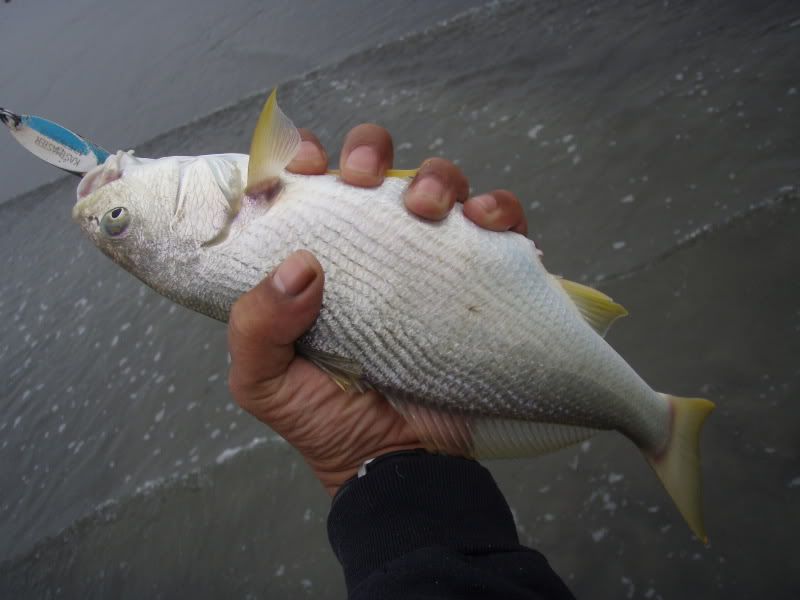
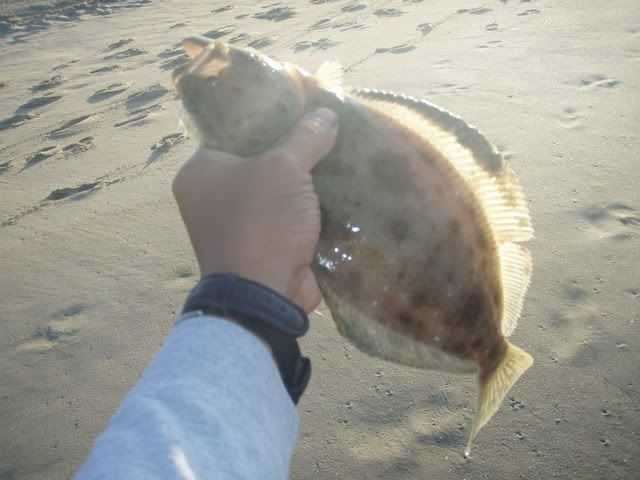
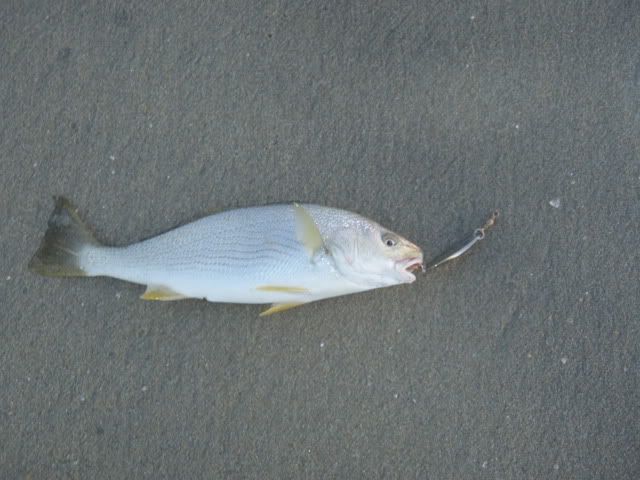
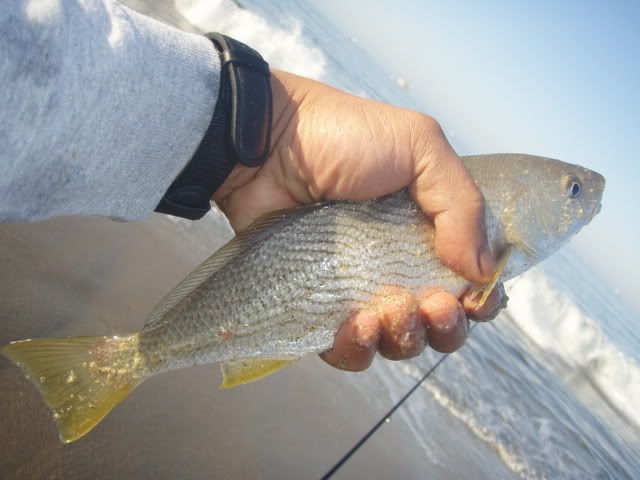
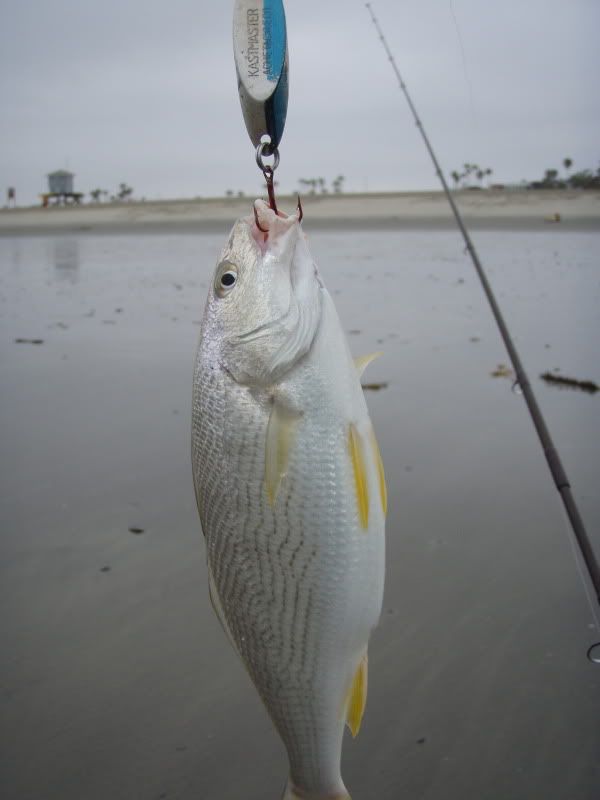

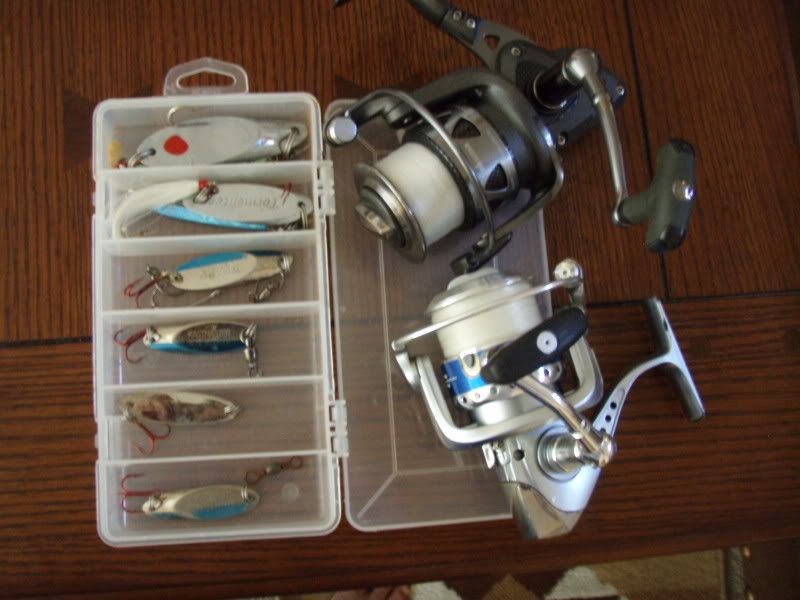
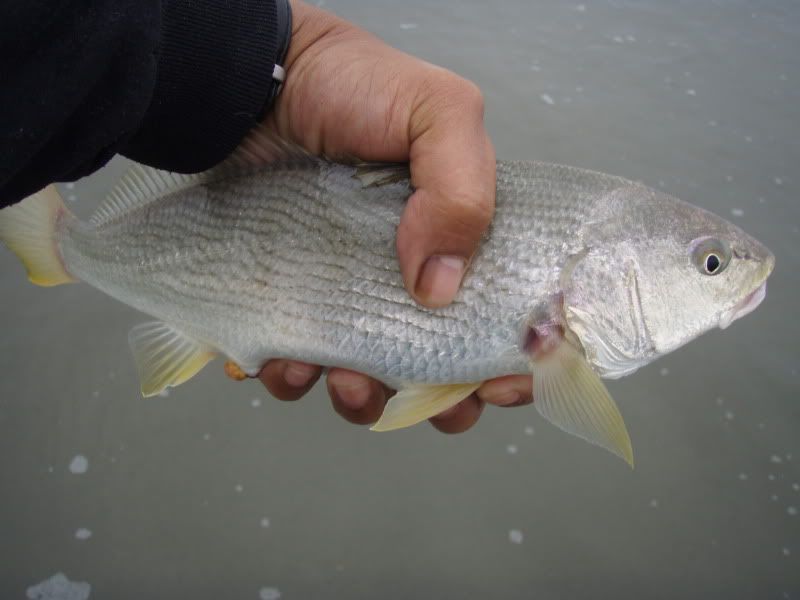

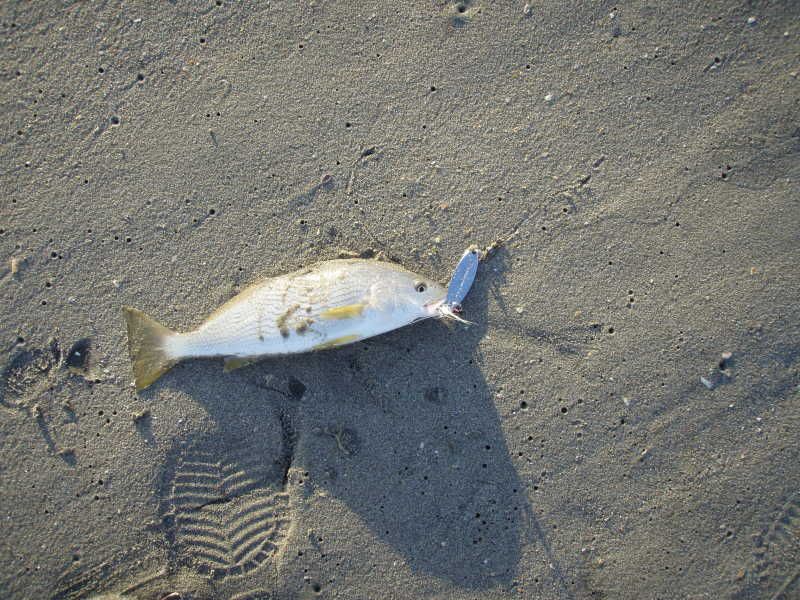
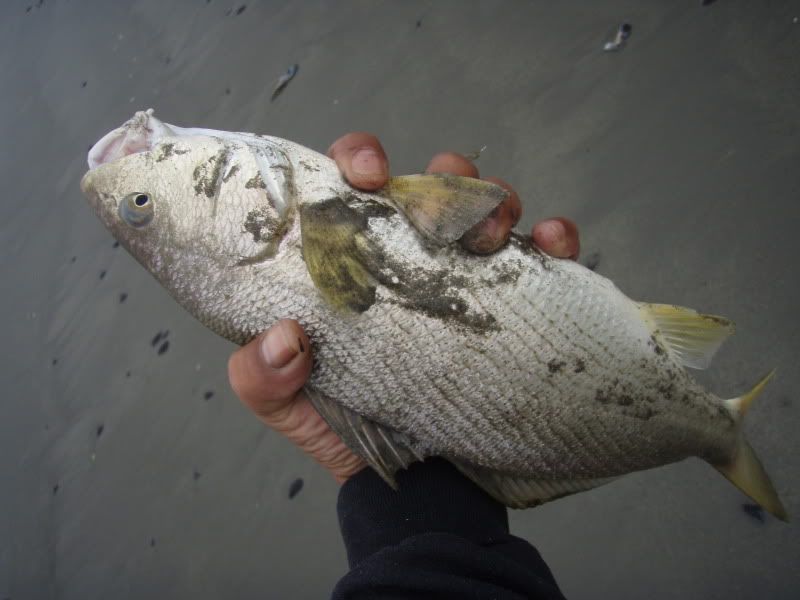
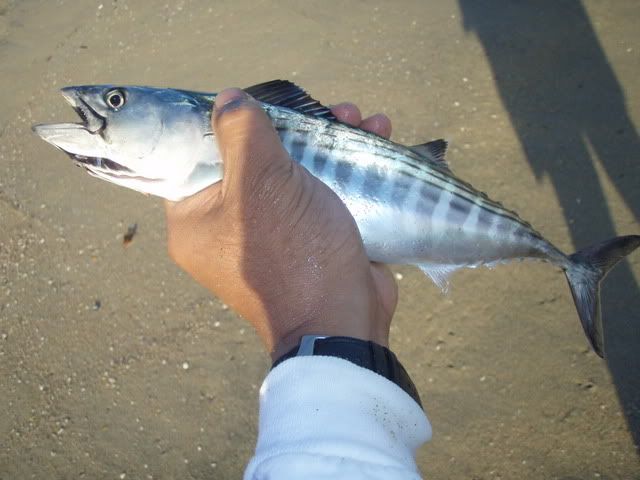
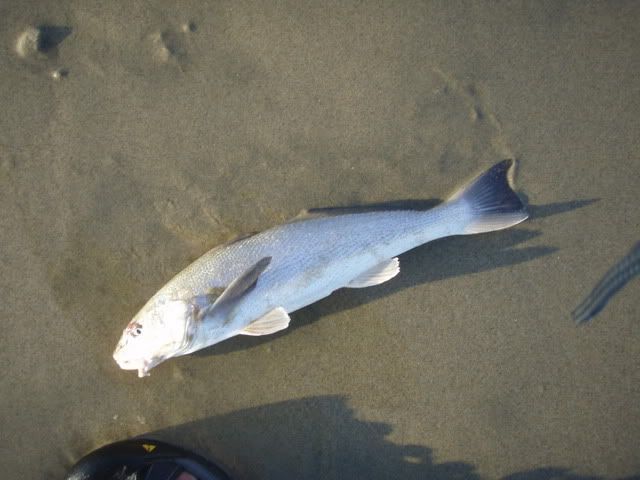
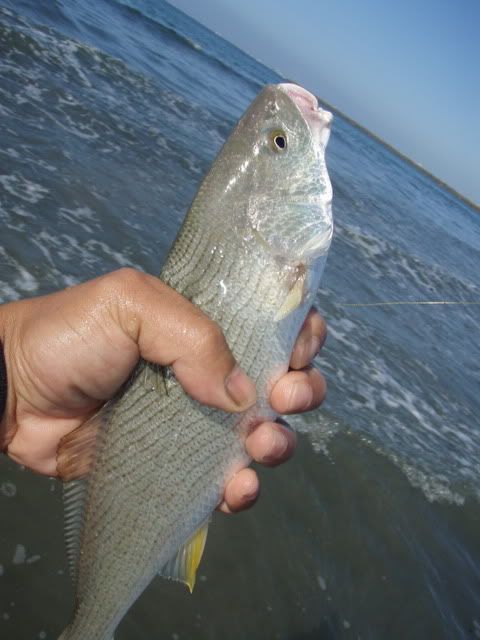
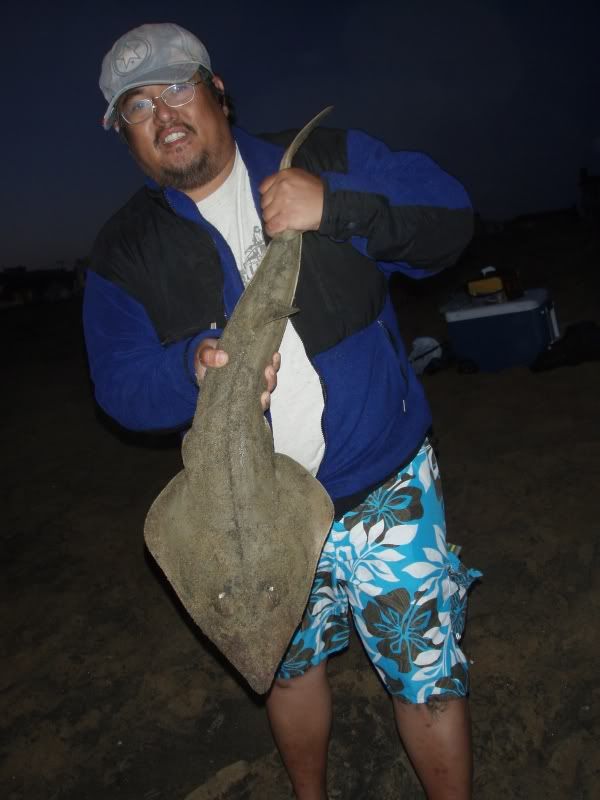
No comments:
Post a Comment